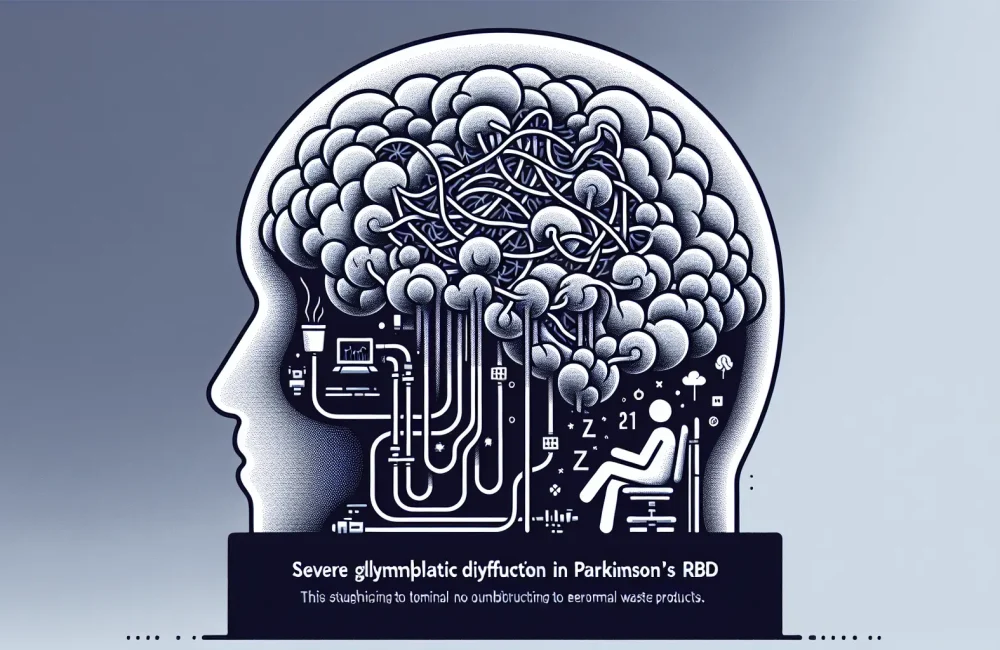By CAFMI AI From npj Parkinson’s Disease (Open Access)
Glymphatic System Dysfunction in Parkinson’s and Sleep Apnea
Parkinson’s disease (PD) is a progressive neurodegenerative disorder characterized not only by motor symptoms but also a wide range of non-motor disturbances. Recently, there has been growing interest in the role of the glymphatic system—a brain-wide network responsible for clearing metabolic waste and neurotoxic proteins—in the pathophysiology of PD. Effective glymphatic function depends heavily on healthy sleep, particularly slow-wave sleep, which facilitates cerebrospinal fluid movement along perivascular spaces. Disruption of this system has been linked to accumulation of pathological proteins that contribute to neurodegeneration. Obstructive sleep apnea (OSA), a common comorbidity in PD, is marked by repeated episodes of upper airway obstruction during sleep, causing intermittent hypoxia and fragmented sleep architecture. These disruptions theoretically impair glymphatic clearance, exacerbating neurodegenerative processes. The study at hand utilized diffusion tensor imaging analysis along the perivascular space (DTI-ALPS)—a novel MRI technique that quantifies glymphatic activity by measuring water diffusivity along perivascular spaces—to investigate whether glymphatic dysfunction correlates with OSA severity in newly diagnosed PD patients.
Key Findings: Severity of Sleep Apnea Correlates with Glymphatic Dysfunction
In a cohort of patients recently diagnosed with Parkinson’s disease, researchers conducted comprehensive polysomnography assessments to evaluate the severity of obstructive sleep apnea, measured by the apnea-hypopnea index (AHI). Participants also underwent MRI scanning using DTI-ALPS methodology to determine the functionality of the glymphatic system through the ALPS index. Statistical analysis revealed a significant inverse correlation between the ALPS index and AHI scores, indicating that patients with more severe OSA exhibited markedly reduced glymphatic clearance capacity. Specifically, those classified with moderate to severe OSA demonstrated notably lower ALPS indices compared to those with mild or no OSA. This suggests that the degree of sleep apnea severity has a direct negative impact on the brain’s waste clearance mechanisms. The findings highlight an important pathophysiological link that might contribute to enhanced neurodegeneration in PD patients suffering from untreated or severe OSA. Controlling for confounding factors such as age, sex, and disease severity strengthened the validity of this association.
Clinical Implications and Future Directions for Parkinson’s Care
These novel insights have critical implications for clinicians managing Parkinson’s disease, particularly in the United States where the prevalence of both PD and OSA is substantial. Early identification and treatment of obstructive sleep apnea might preserve or improve glymphatic function, potentially slowing the progression of neurodegenerative changes in patients with PD. Continuous positive airway pressure (CPAP) therapy, the standard for OSA treatment, could therefore be a valuable intervention not only for improving sleep quality but also for maintaining effective glymphatic clearance. Given the study’s findings, routine screening for OSA in newly diagnosed PD patients is advisable to identify those at risk of glymphatic impairment. Clinicians should consider interdisciplinary collaboration involving sleep medicine specialists to optimize patient outcomes. Additionally, ongoing monitoring of glymphatic function through non-invasive imaging techniques like DTI-ALPS could serve as a biomarker to evaluate treatment efficacy. Future research should further explore therapeutic strategies targeting both sleep apnea and glymphatic support, clarifying their potential to mitigate disease progression and improve quality of life in PD patients. In primary care workflows, integrating sleep disorder evaluation as part of comprehensive PD management protocols will be essential for timely intervention and counseling on adherence to OSA treatments.
Read The Original Publication Here






